PUC Union Straight — One‑Touch Pneumatic Fitting for Compressed Air Lines
The PUC Union Straight is a one‑touch pneumatic fitting engineered to deliver fast, repeatable, tool‑free tube connections for compressed air systems. Designed for reliability and ease of installation, this fitting combines rapid push‑in tube coupling with sealed threaded ends and a compact form factor optimized for confined‑space installations. Available in both metric and inch tube sizes and offered with a PC (hexagonal) body for limited‑access use, the PUC Union Straight is suited to automated pneumatic systems, machine tool lines and other industrial air distribution applications where speed, serviceability and consistent sealing are essential.
Introduction
Pneumatic systems rely on a multitude of fittings to distribute compressed air from central compressors to actuators, valves and sensors. The PUC Union Straight one‑touch fitting addresses three common design objectives: reduce assembly time, maintain leak‑free connections, and minimize the footprint of connection points in machine layouts. With push‑in tube connection and a simple release sleeve mechanism, the PUC Union Straight enables technicians and engineers to assemble or reconfigure air lines quickly without the need for tools or special skills.
This article provides a comprehensive technical overview of the PUC Union Straight: its design intent, operational envelope, material choices, installation best practices, comparison to alternative fittings, benefits and constraints, and recommended maintenance procedures. Content is written for technical readers — maintenance technicians, plant engineers and design engineers — who require precise guidance on specification, selection and long‑term use of this fitting.
Technical Overview
The PUC Union Straight is a push‑in (one‑touch) union coupling configured in a straight geometry. The primary functional elements are:
- Push‑in connection port that accepts polyurethane (PU), nylon (PA), polyethylene (PE) or similar flexible compressed air tubing. The tube is simply pushed into the fitting until an audible or tactile seat is felt.
- Release sleeve (collet) that, when depressed, retracts the locking teeth and permits tool‑free tube withdrawal in 1–2 seconds.
- Threaded threaded end(s) which mate to pipe ports, valves or manifold blocks. Threaded portions are supplied with a sealing coating (pre‑applied thread sealant) to simplify assembly and prevent leakage.
- PC type (hexagonal) body option where inner and outer surfaces are shaped for wrench engagement and easy installation in confined spaces.
Functionally, the PUC Union Straight acts as a union — connecting two lengths of tubing or connecting tubing to a threaded port. Typical uses include interposing short runs, branch connections, or serviceable junctions in control circuits and actuator manifolds.
Operational Parameters
The PUC Union Straight is engineered for compressed air only (including instrument air and general plant air). The published operating ranges are:
- Pressure range: 0 to 150 PSI (approx. 0–990 kPa)
- Vacuum capability: down to −29.5 in Hg (≈ −750 mm Hg, 10 Torr)
- Temperature range (recommended): 0–60°C (32–140°F)
These ranges make the PUC Union Straight suitable for most industrial pneumatic controls and general machinery service. The fitting is not intended for use with oxygen, combustible gases, liquids under pressure, or extreme temperature environments unless specified in a manufacturer’s variant product datasheet.
Specifications and Dimensions
Below is a practical specification table illustrating the common tube sizes (metric and inch) and representative physical dimensions for the PUC Union Straight family. These values are representative of standard one‑touch union fittings and should be used for selection and planning; verify final dimensions and weights with supplier drawings for detailed CAD integration or panel layout.
| Product Code | Tube Size | Tube OD (mm) | Typical Thread Options | Body Length (mm) | Hex Width (across flats) (mm) | Approx. Weight (g) | Recommended Max. Operating Pressure (PSI) |
|---|---|---|---|---|---|---|---|
| PUC 04 / PC04 | 4 mm (metric) / 5/32″ (inch) | 4.0 | 1/8″, M5, 1/8″ BSPP/PT (market dependent) | 28 | 10 | 8 | 150 |
| PUC 06 / PC06 | 6 mm / 3/16″ | 6.0 | 1/8″, 1/4″, M5, 1/8″ BSPP/PT | 30 | 11 | 12 | 150 |
| PUC 08 / PC08 | 8 mm / 1/4″ | 8.0 | 1/8″, 1/4″, 1/8″ BSPP/PT | 33 | 13 | 18 | 150 |
| PUC 10 / PC10 | 10 mm / 5/16″ | 10.0 | 1/4″, 3/8″, 1/4″ BSPP/PT | 36 | 14 | 24 | 150 |
| PUC 12 / PC12 | 12 mm / 3/8″ | 12.0 | 1/4″, 3/8″, 1/2″ option | 40 | 17 | 34 | 150 |
| PUC 16 / PC16 | 16 mm / 1/2″ | 16.0 | 3/8″, 1/2″ | 46 | 19 | 56 | 150 |
Notes:
- Threading standards and availability vary by market (NPT, BSPP/G, BSPT/PT and metric threads such as M5 are commonly offered). Confirm thread standard when ordering.
- Body length and hex width vary with thread size and PC type geometry. The “PC” variant features a more pronounced hex shape to permit easier wrench access in confined spaces.
- Weight values are indicative and useful for mass‑balance calculations; use supplier CAD for precise values.
Materials and Build Quality
Material selection and manufacturing quality directly influence long‑term performance, sealing integrity and resilience to environmental factors. The PUC Union Straight is typically produced in variants optimized for industrial compressed air use. Common materials and their functional roles are described below.
Body and Threaded Components
Typical materials:
- Nickel‑plated brass (standard): Good mechanical strength, corrosion resistance in general industrial environments, good machinability and durable thread surfaces. Nickel plating provides additional wear and corrosion protection.
- Brass (unplated): Utilized where plating is not required; brass offers excellent machinability and sealing when combined with O‑rings or pre‑applied sealants.
- Stainless steel (optional): Offered for high‑corrosion environments, chemical exposure, or where stainless manifolds are used. Stainless variants cost more but extend life in aggressive environments.
Collet (Release Sleeve) and Internal Grippers
Materials for the collet and internal gripping elements are selected to offer reliable tube retention and repeated actuation:
- POM (polyacetal) / Delrin: Common for the external sleeve due to low friction, dimensional stability and chemical resistance to oil and water vapor found in compressed air.
- Plated brass or stainless steel gripper teeth: Internal teeth that secure the tube are typically metal to ensure long term bite strength and resistance to deformation.
Seals and O‑rings
Sealing performance is achieved through elastomeric O‑rings and seat seals:
- Nitrile (NBR): Common standard material for seals. Good resistance to oil, air and standard range of temperatures used in pneumatic systems.
- Fluorocarbon (FKM / Viton): Optional for higher temperature resistance and enhanced chemical resistance where required.
- EPDM: Can be used where water vapor and ozone resistance are desirable, but check compatibility with oils.
Manufacturing and Quality Control
Key quality considerations:
- Precision machining of the internal bore to ensure concentric sealing and consistent grip on tube OD.
- Controlled assembly torque and fastening for assemblies with pre‑applied thread sealant.
- Dimensional quality control using gauge blocks and functional cycle testing (repeated connect/disconnect) to validate longevity.
- Material traceability and compliance with RoHS and other regulatory requirements in customer markets.
Key Features
The PUC Union Straight offers a set of features that address the main challenges encountered in pneumatic installations. Many of these are oriented towards installation speed, leak prevention and compactness.
- One‑touch push‑in connection: Rapid, tool‑free assembly — push the tube in until it seats, creating a secure mechanical and pneumatic seal.
- Rapid release: Depress the sleeve to release the tube; typical disconnect time is 1–2 seconds, enabling quick reconfiguration or maintenance.
- Sealed threaded ends: Threads are supplied with a pre‑applied sealing coating (sealant), reducing the risk of assembly leaks and minimizing installation time.
- PC (hexagonal) body option: Hexagonal inner and outer surfaces allow wrench engagement in confined spaces and better access when clearances are limited.
- Metric and inch tube compatibility: Models cover common tube ODs: metric 4, 6, 8, 10, 12, 16 mm and inch equivalents (5/32, 3/16, 1/4, 5/16, 3/8, 1/2).
- Wide pressure and vacuum capability: Rated up to 150 PSI and capable of near‑full vacuum down to −29.5 in Hg, making it suitable for actuators, vacuum pickups and control circuits.
- Compact footprint: Short body lengths and small hex sizes allow dense installation on manifolds and valve islands.
- Serviceability: Tubing can be disconnected and reconnected multiple times without thread damage and with minimal degradation of sealing components assuming normal service and maintenance.
Use Cases / Applications
The PUC Union Straight is a versatile fitting with applications across many segments of industrial automation and process equipment. Representative use cases include:
1. Machine Tool Pneumatic Lines
Machine tools commonly require a network of air lines for clamping, actuation and tool change systems. The PUC Union Straight allows quick routing changes during machine setup and simplified maintenance access for replacing hoses to actuators and valves.
2. Automated Assembly and Robotics
Robotic end‑of‑arm tooling frequently uses compact pneumatic circuits for gripping and vacuum pickups. The compact dimensions and rapid disconnect of the PUC Union Straight enable fast tool change and minimal obstruction in tight spaces.
3. Control Panels and Valve Manifolds
In control cabinets and valve islands, space is at a premium. The PC hex type allows technicians to make connections in confined recesses where a typical round body fitting would be difficult to engage with a wrench.
4. Test Benches and Laboratory Equipment
For test rigs where pneumatic configurations are changed frequently, the one‑touch nature of the fitting reduces setup time and lowers the risk of thread damage from repeated installation and removal.
5. Vacuum Pick‑and‑Place Systems
Given its vacuum capability, the PUC Union Straight can be used for simple vacuum plumbing in pick‑and‑place equipment when the vacuum level required is within the fitting’s rated vacuum range.
Comparison with Alternative Fittings
When selecting a pneumatic fitting, engineers weigh trade‑offs between cost, speed of installation, leak performance, and mechanical robustness. The table below summarizes a practical comparison between the PUC Union Straight, a standard push‑in straight fitting and a threaded compression fitting.
| Characteristic | PUC Union Straight (One‑Touch Union) | Standard Push‑In Straight Fitting | Threaded Compression Fitting |
|---|---|---|---|
| Connection Method | Push‑in tube to union + threaded end | Push‑in tube to fixed male/female port | Threaded + nut/compression ring (requires tools) |
| Installation Speed | Very high (tool‑free) | High (tool‑free) | Low (requires tools and torque control) |
| Serviceability | Excellent (rapid disconnect) | Excellent | Moderate (requires tools to disassemble) |
| Leak Resistance | High (pre‑applied thread sealant + O‑ring seals) | High (rely on O‑ring/collet seal) | High when properly installed; subject to nut torque |
| Compactness | High — compact union geometry | Varies | Lower — bulkier due to nut/compression ring |
| Mechanical Robustness | Good — metal body, reinforced collet | Good | Very good — metal compression ring supports tensile load |
| Best Use | Serviceable connections, confined spaces, modular systems | Permanent or semi‑permanent tube to port connections | High pressure or semi‑permanent lines where tool assembly is acceptable |
Benefits and Limitations
Benefits
- Rapid Installation and Rework: One‑touch connectivity eliminates the need for assembly tools, reducing labor time and human error.
- Compact Design: Short body length and PC hex option reduce system footprint and facilitate tight packaging in control panels and manifolds.
- Repeatable Seal Integrity: O‑ring seals combined with pre‑applied thread sealant ensure consistent leak performance across multiple assembly cycles.
- Wide Pressure Range: Rated up to 150 PSI (≈990 kPa), covering the majority of industrial pneumatic applications.
- Vacuum Capability: Can be used for near‑full vacuum applications down to approximately −29.5 in Hg, useful for suction circuits.
Limitations
- Compressed Air Only: Designed and rated for compressed air. Use with other gases or liquids may require specially specified materials and certification.
- Temperature Range: Standard seals and plastics are rated 0–60°C. For higher or lower temperature operation, select fittings with high‑temperature seals (FKM) or stainless construction.
- Tube Material Compatibility: Push‑in retention is dependent on tube material and wall thickness. Rigid or poorly sized tubing may not seat properly or may be difficult to release.
- Not Intended for Pressure Vessels: Do not use in applications that are classified as pressure vessels or where fittings must meet specific vessel certification unless explicitly certified.
Selection Guidelines
To select the correct PUC Union Straight model for your application, follow these steps:
- Identify tube OD and wall: Choose the PUC code that matches your tube OD (PUC 04 for 4 mm, PUC 06 for 6 mm, etc.). Check tube wall thickness and material to ensure compatibility with the collet grip range.
- Confirm thread standard: Specify thread type and gender required for mating port (BSPP/G, BSPT/PT, NPT, M‑metric threads). Many suppliers offer both male and female threaded variants.
- Specify materials/environment: For corrosive environments or washdown, specify stainless steel body and FKM seals where appropriate.
- Check pressure/temperature: Verify that the operating pressure and ambient temperature fall within the fitting’s rated limits.
- Consider PC (hex) type for confined spaces: If access for a wrench is limited, the PC hex variant simplifies installation and removal.
Installation and Practical Guidelines
Correct installation is critical for ensuring leak‑free performance and maximizing the service life of the fitting. Follow these professional guidelines when installing the PUC Union Straight.
Pre‑Installation Checks
- Confirm the tube OD is within the published tolerance for the selected PUC code. Tubing that is undersized will leak; tubing that is oversized will not fully insert.
- Inspect tubing for burrs, nicks or cuts at the cut end. Ensure a square, clean cut perpendicular to the tube axis. Use a proper tube cutter rather than a knife.
- Verify the thread standard and mating port. If necessary, clean mating threads and remove any debris.
Installation Steps
- For threaded connection, wrap the mating male thread with the recommended sealant/tape per manufacturer guidance if not pre‑coated. The PUC Union Straight often ships with pre‑applied thread sealant; when present, no additional tape is usually required — confirm with supplier documentation.
- Hand‑tighten the fitting into the mating port until hand tight.
- If required, apply a final wrench turn. Do not exceed the recommended wrench turns — typically 1/4 to 1/2 turn beyond hand tight for small threads. Avoid over‑torquing which can damage threads or crush the fitting body.
- Insert the tubing fully: push the tube into the push‑in port until it bottoms out. A tactile click or firm stop indicates full insertion.
- Pull back gently on the tubing to verify the collet has engaged and the tube is retained.
Installation Tips for Confined Spaces (PC Type)
- Engage the hex flats with a matching wrench for the final torque. The PC type enables wrench engagement without needing clearance all around the fitting body.
- Use low‑profile open‑end wrenches or crowfoot sockets where depth is limited.
Bend Radius and Support
- Avoid tight bends and kinking of the tube immediately adjacent to the fitting. As a guideline, maintain a minimum bend radius of 4–10× the tube OD depending on tube material (consult tube manufacturer for exact minimum bend radius values).
- Use clips and clamps to secure tubing runs and reduce cyclical stress on fittings, particularly on moving machinery or vibration‑intensive equipment.
Maintenance and Care Guide
The PUC Union Straight is designed for durability and multiple connection cycles, but scheduled maintenance improves reliability. Follow these recommendations for care and troubleshooting.
Routine Inspection
- Inspect installed fittings periodically for visible leaks, corrosion, or mechanical damage.
- Check for signs of tube slippage, abrasion or mandatory re‑routing after maintenance or machine changes.
- Verify that the release sleeve moves freely and does not stick due to dirt or buildup.
Leak Troubleshooting
If you detect a leak at the threaded connection:
- Confirm thread engagement and re‑tighten per installation guideline. If pre‑applied sealant was present, avoid removing and reapplying multiple times; instead, disassemble and apply the recommended thread sealant before reinstallation.
- Inspect thread faces and mating port seal surfaces for damage. Replace the fitting if threads are stripped or distorted.
If you detect a leak at the tube connection:
- Remove the tube and inspect the cut end for squareness and burrs. Recut the tube with a proper cutter if necessary.
- Ensure the tube is fully inserted until it seats. Partial insertion is a frequent cause of leakage.
- Inspect the O‑ring or internal seal — debris or damage may necessitate seal replacement.
Replacement of Seals and Collet Components
- Some suppliers provide spare O‑rings and collet assemblies. If the seal is damaged or the tubing retention weakens, replace the seal first and retest.
- If the collet teeth are worn (reduced gripping strength), replace the entire push‑in module or the fitting as recommended by the manufacturer.
Service Life and Replacements
Push‑in fittings can be disconnected and reconnected multiple times, but each cycle causes minor wear on elastomers and gripping surfaces. Track disconnection cycles for mission‑critical lines and replace fittings that show degradation. Use a scheduled preventive maintenance approach where fittings in high‑use areas are inspected and replaced on a planned interval.
Troubleshooting: Common Issues and Remedies
1. Tube Does Not Insert Fully
- Check that the tube OD is compatible with the selected fitting size and that the tube end is cut squarely.
- Make sure the fitting was not inadvertently assembled with a foreign object in the port.
2. Difficulty Releasing the Tube
- Depress the sleeve fully while pulling the tube out. Lubrication or dirt can cause the sleeve to stick — clean with compressed air and wipe the sleeve.
- If the tube has been in place a long time, it may be bonded to the O‑ring; try depressing the collet while twisting the tubing slightly to break the bond.
3. Audible Leak After Installation
- Confirm the threaded end was properly sealed and tightened. If pre‑applied sealant was used, reapply as needed following manufacturer’s guidance.
- Check tube seating and O‑ring condition.
4. Blowout Under Tensile Load
- If a tubing blowout occurs when the line is under tensile stress, verify that the tube clamp or support is adequate. Push‑in fittings provide axial retention but are not designed as primary mechanical anchors for heavy loads or tension — add mechanical clamps for such scenarios.
Safety Considerations
- Always depressurize pneumatic circuits before disconnecting or servicing fittings.
- Do not connect fittings to high‑pressure fluids or gases not rated for the fitting. The PUC Union Straight is for compressed air; consult the manufacturer for compatibility approvals if in doubt.
- Replace components if corrosion, cracks or significant wear are detected.
- Follow relevant local standards and machine safety regulations when integrating fittings into equipment that moves or could expose personnel to hazards upon failure.
Applications by Industry
Below are industry‑specific examples where PUC Union Straight fittings contribute value:
- Automotive manufacturing: Fast tool change operations and frequent reconfiguration of air jigs benefit from one‑touch unions.
- Packaging: High‑speed packaging lines require compact fittings with repeatable performance for actuators and vacuum cups.
- Food & beverage (non‑washdown zones): Pneumatic controls for conveyors and valves where stainless versions or food‑grade seals may be specified.
- Semiconductor and electronics: Cleanroom‑compatible versions with low particle generation (select appropriate materials and manufacturing controls).
- Laboratory and testing equipment: Rapid reconfiguration of pneumatic control lines supports frequent test changes.
Example Selection Scenarios
Two short examples illustrate typical life‑cycle decisions when specifying a PUC Union Straight.
Example 1 — Assembly Line Valve Island
Scenario: A valve island in an assembly line uses 8 mm PU tubing on valve outputs. Frequent valve replacement requires quick disconnects. Confined space around the valve requires wrench access only from one side.
Selection: PUC 08 with 1/4″ BSPP thread, PC (hex) type, nickel‑plated brass body and NBR seals. The PC hex allows final tightening with a wrench in the shallow valve pocket. The push‑in connection supports quick reconfiguration by maintenance personnel.
Example 2 — Vacuum Pickup Network for Pick & Place
Scenario: Vacuum cups are distributed using 6 mm tubing and small vacuum generators. Vacuum levels approach near‑full vacuum at the pickup heads.
Selection: PUC 06 (6 mm tube) with vacuum‑capable seal set and stainless body option if high moisture or corrosive solvents are present. Confirm vacuum‑rated seals and that all tubing and fittings are specified for vacuum to −29.5 in Hg.
Ordering and Model Coding
Model coding for the PUC Union Straight typically follows a concise format. An example convention would be:
PC + tube code + thread size
For example: PC06 1/8 — which denotes a PC (hex) type fitting sized for a 6 mm tube with a 1/8″ thread. Mapping between PUC product codes and tube ODs often follows:
- PUC 04 — 4 mm (metric) / 5/32″ (inch)
- PUC 06 — 6 mm / 3/16″
- PUC 08 — 8 mm / 1/4″
- PUC 10 — 10 mm / 5/16″
- PUC 12 — 12 mm / 3/8″
- PUC 16 — 16 mm / 1/2″
When ordering, always specify:
- Exact tube size (metric or inch) and wall thickness if non‑standard.
- Thread type and gender (e.g., 1/8″ BSPP male).
- Material variant (nickel‑plated brass, stainless steel) and seal material (NBR, FKM).
- PC (hex) or standard body option.
Conclusion
The PUC Union Straight one‑touch pneumatic fitting is a practical, high‑value component for modern compressed air systems where speed of assembly, compact installation and reliable sealing are priorities. With push‑in tube connection, rapid release, sealed threaded ends and a PC hex variant for confined‑space installation, it meets the needs of machine builders, maintenance teams and automation engineers who require repeatable, leak‑free performance.
To maximize value, choose the correct tube size and thread standard, confirm material and seal compatibility with service conditions, and implement standard installation and maintenance practices described in this article. When applied according to the manufacturer’s guidance, the PUC Union Straight reduces downtime, simplifies reconfiguration and prolongs the reliability of pneumatic installations.
If you need help selecting the correct PUC Union Straight model for a specific system — including thread standard matching, material selection for corrosive environments, or CAD models for panel layout — consult your supplier’s technical documentation or contact their technical sales support for compatibility verification.
Key search terms: PUC Union Straight, one‑touch pneumatic fitting, push‑in fitting, PC type hex fitting, compressed air connector, metric and inch tube pneumatic union.

 Tiếng Việt
Tiếng Việt
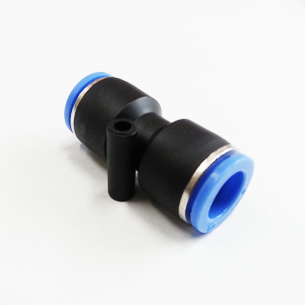
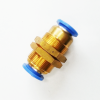
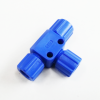
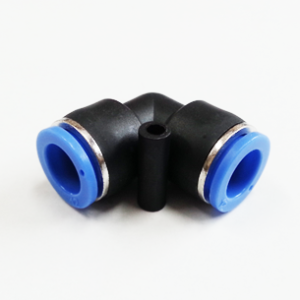
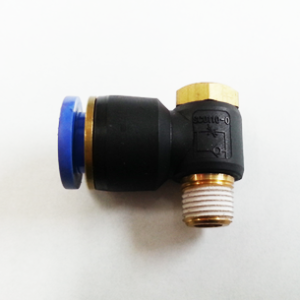

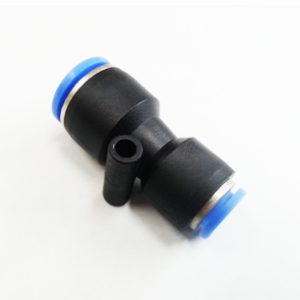
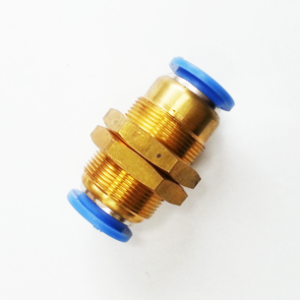
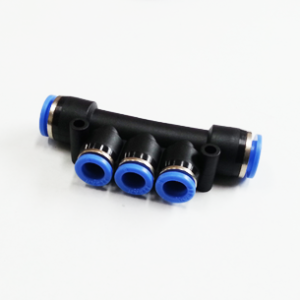
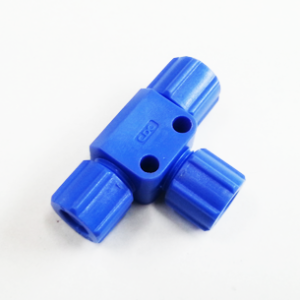
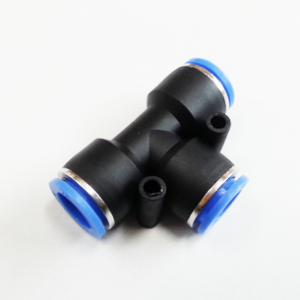
Reviews
There are no reviews yet.